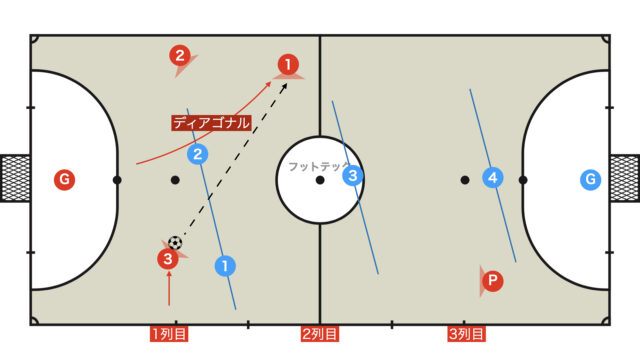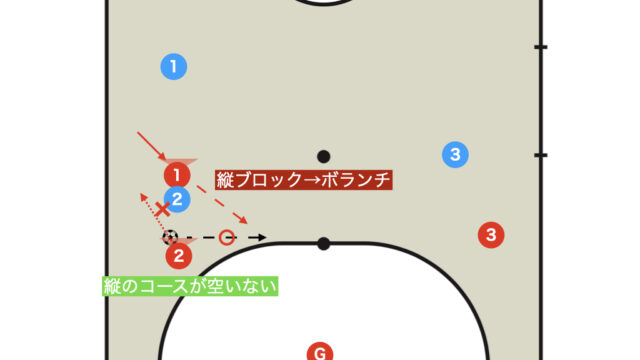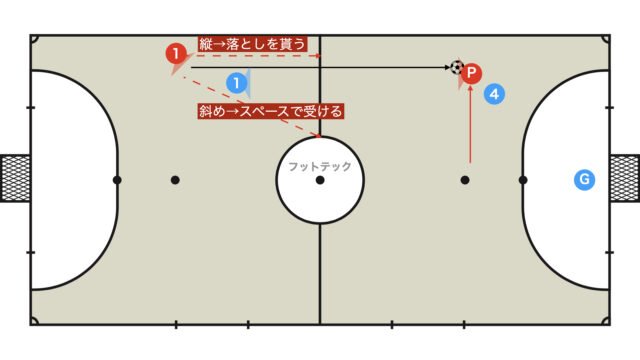Parallera means “parallel” in Spanish, and in futsal, Parallera refers to a duo tactic in which a pass is played parallel to the touchline, crossing the DF line.
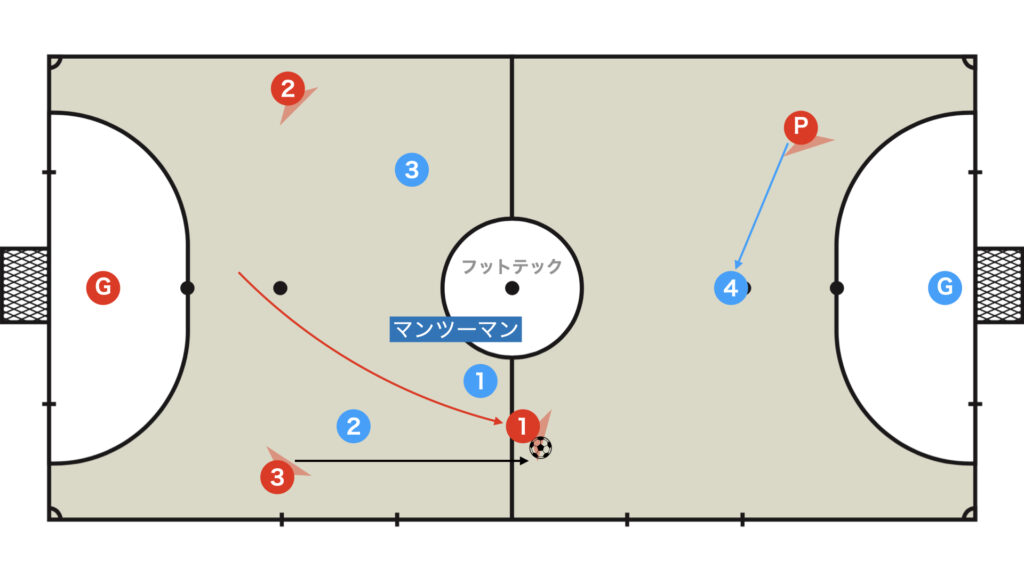
This Parallera tactic may appear simple at first glance, but it is in fact a very profound strategy.
This article provides a thorough explanation of the key points for executing Parallera as well as all its variations.
Key Points of Parallera
- Recognition of space and preferred foot
- Awareness of the duo relationship (passer and receiver)
- Recognition of defensive responses
Recognition of Space and Preferred Foot
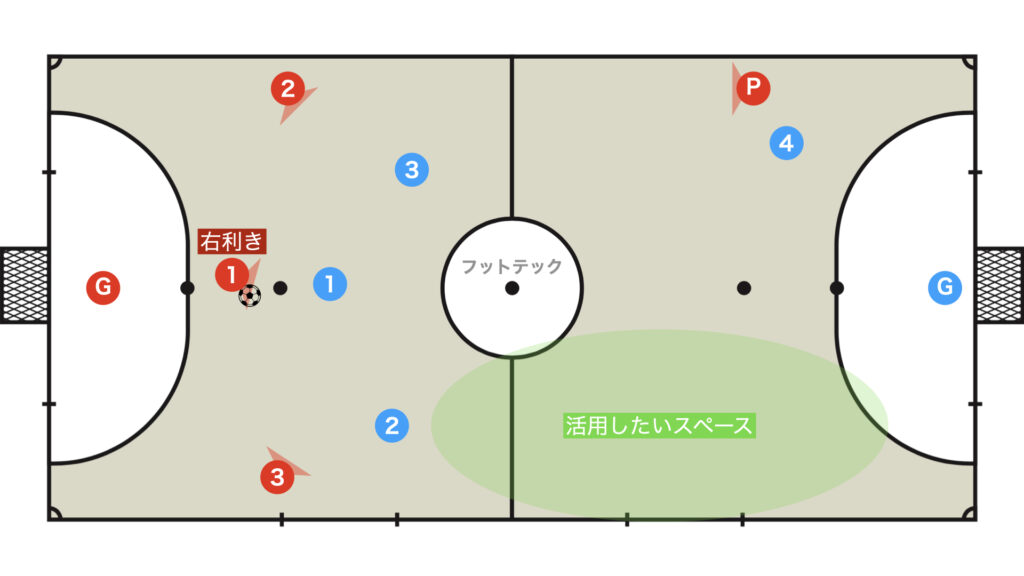

If you attempt a Parallera in an area without space, it will be covered; therefore, it is important to recognize the space you wish to exploit in advance.
If you intend to carry the play through to a finish after establishing a Parallera, you should ensure that the receiver’s preferred foot aligns with the side you want to utilize.
In the above figure, after receiving the Parallera, the player in red No.1 can finish using his right preferred foot.
Conditions for a Successful Parallera
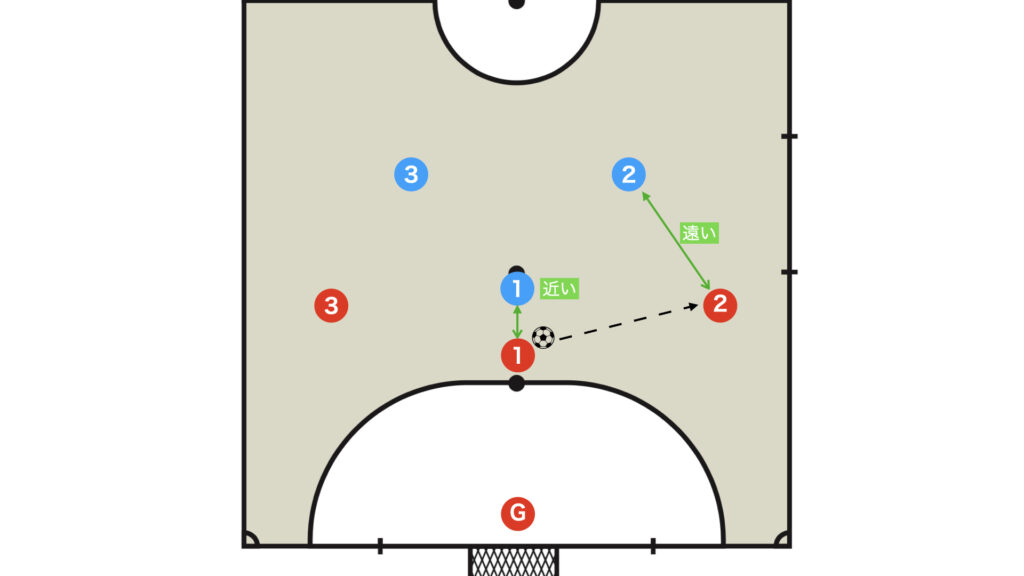

Regarding the duo relationship, it is necessary to set up a configuration where the receiver is positioned closer and the passer is further away.
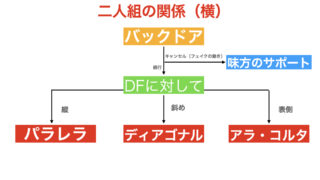

Specifically, the conditions for a successful Parallera are the following two:
- The passer’s vertical route is open
- The receiver has managed to lose his marker
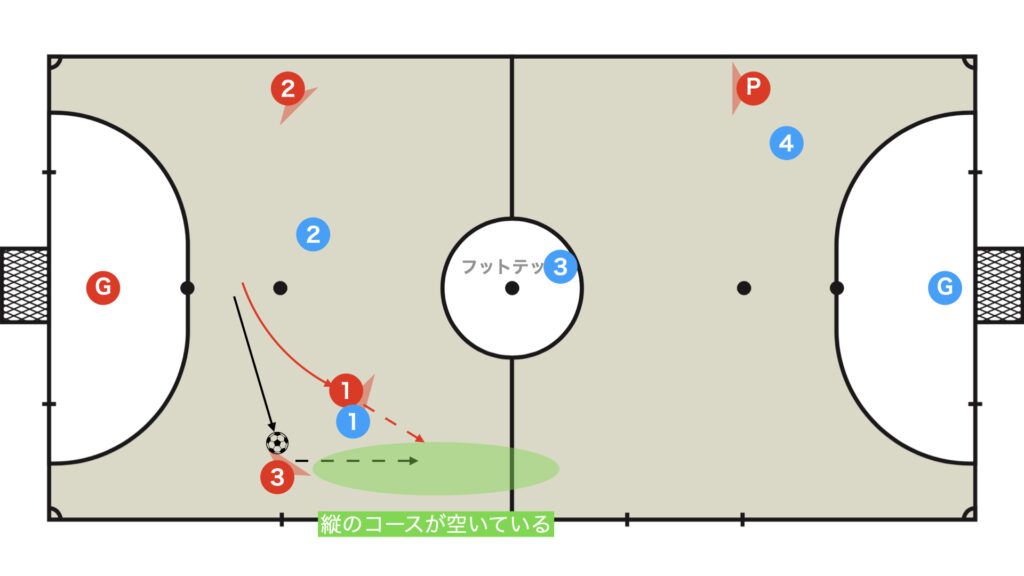

Even if these two factors are met, the success of a Parallera also depends on the timing between the receiver and the passer, as well as the strength and trajectory (timing and quality) of the ball (pass).
If you force a Parallera pass when the vertical channel is blocked, risking a lost ball, it is extremely risky; in such cases, perform a central dribble to search for another passing lane.
Attracting the Opponent’s Defense (Defensive Fixation)
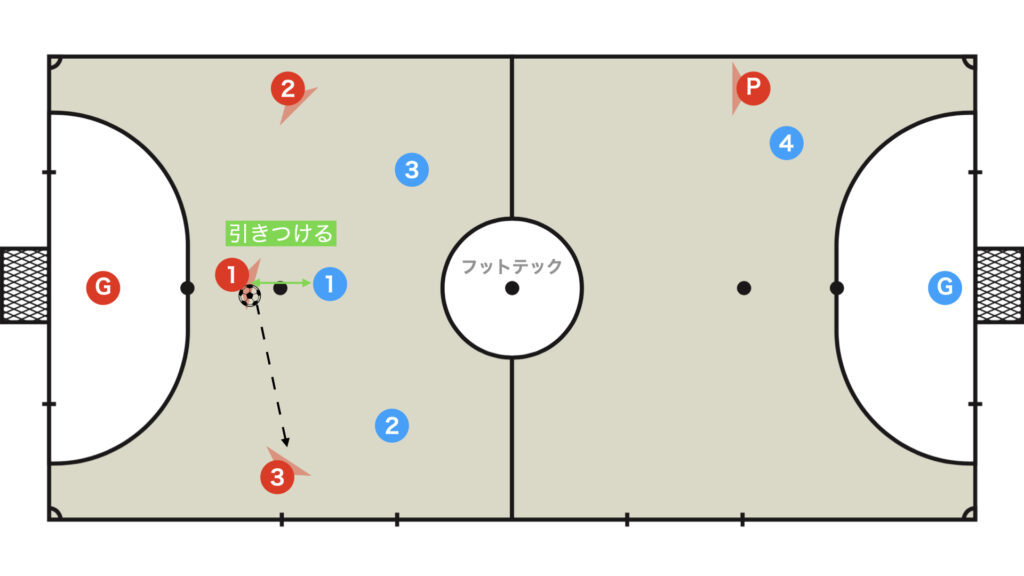

If the distance between the receiver (red No.1) and the opponent’s defense (blue No.1) is large, intentionally drawing the opponent can make it easier to exploit the space behind them.
A Parallera in which the ball is exposed to the opponent’s DF until the last moment and then played to the outside with an ala is frequently used even at the top level.
Recognizing Defensive Responses
Defenses can be broadly categorized as man-to-man or zone-style (with multiple lines), and it is extremely important to recognize which system the opponent is employing.
Against Man-to-Man
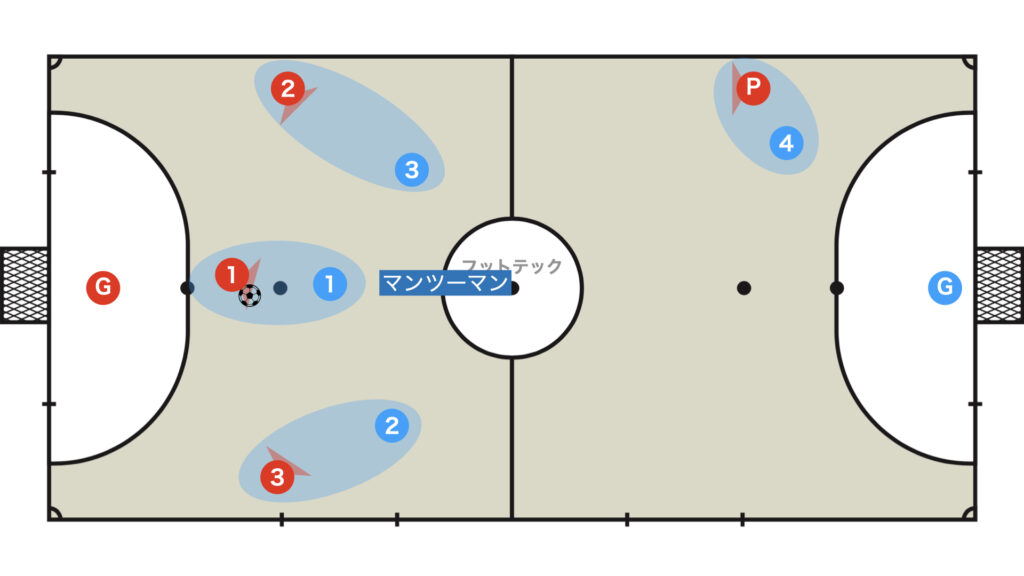

If the opponent is playing man-to-man, creating space by shaking off your marker can generate a huge opportunity.



In a 3-1 formation as shown above, it is possible to create a 2v1 situation in the opponent’s half and progress easily to a finish.
Against Zone Defense (Multiple Lines)
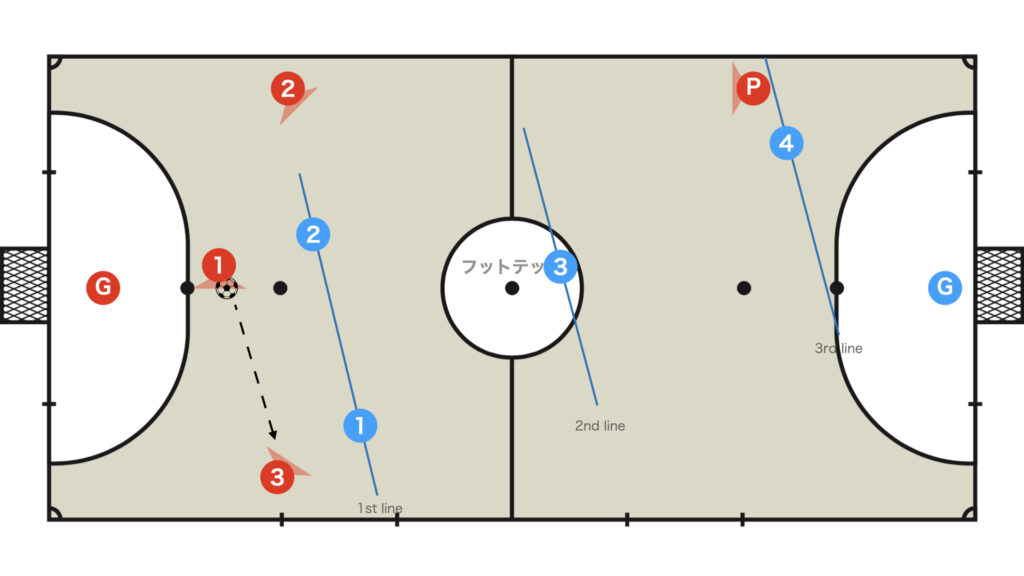

Against a zone defense composed of multiple lines, even if a Parallera is executed, it does not necessarily create a significant opportunity, but it can confuse three opposing defenders.
- 2nd DF: Should marking be switched?
- 3rd DF: Should cover be provided against the mini Parallera?
- 4th DF: Should cover be provided against the long Parallera?
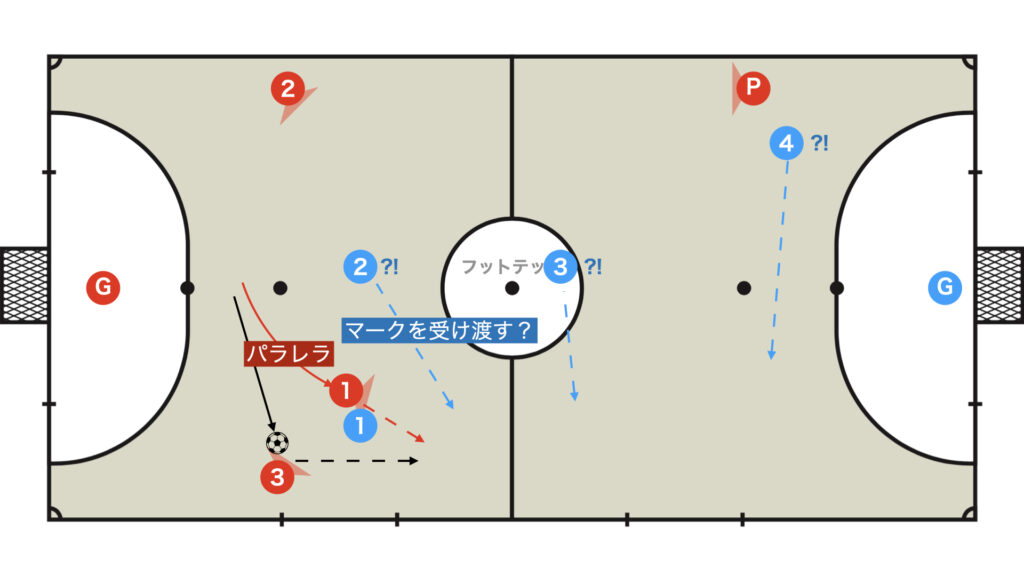

If the accuracy of the Parallera is high, it can create a 2v1 situation in the opponent’s half just as effectively as in man-to-man play.
Timing and Quality (Trajectory) of the Pass
- The timing when teammates are facing forward and can accelerate
- How to deliver a pass that avoids your defender’s feet
The Timing When Teammates Are Facing Forward and Can Accelerate
Rather than blindly choosing a lofted pass, the Parallera pass should be delivered as either a lofted ball or a ground pass depending on the situation.
If the Receiver Has Not Yet Entered the Vertical Space: Lofted Pass
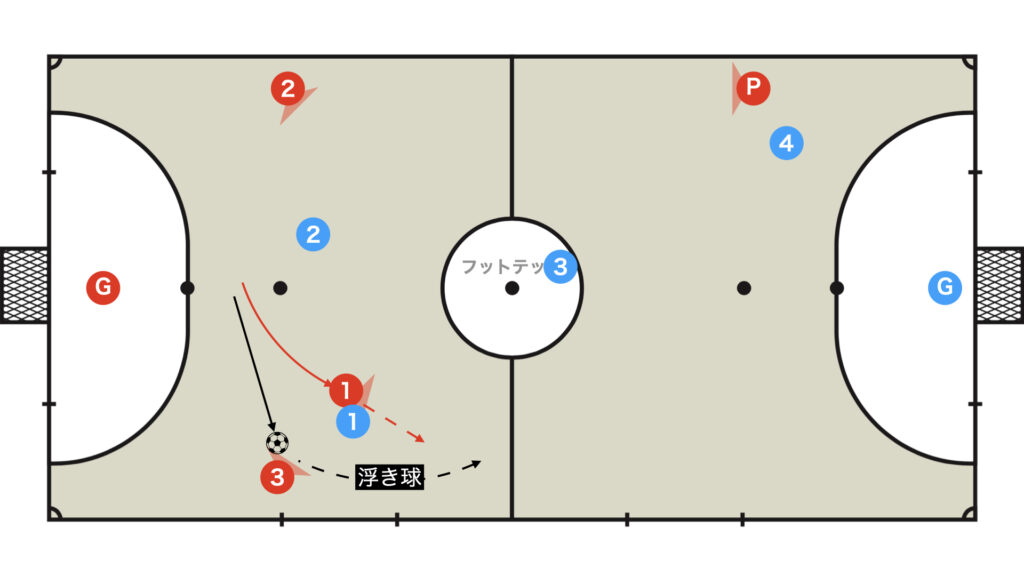

If the receiver has not yet fully broken free, it is best to play a lofted pass so that the ball lands in the available space.
(A lofted ball tends to stop in open space.)
If you play a ground pass, the ball may roll away and be intercepted by the opponent.
If the Receiver Has Already Entered the Vertical Space: Ground Pass
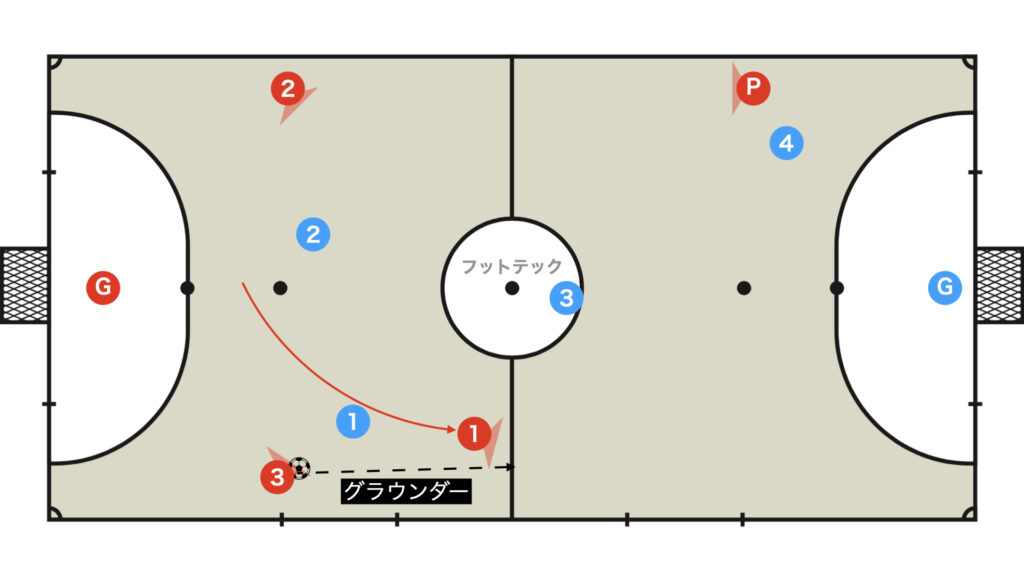

If the receiver has completely broken free, it is best to deliver a ground pass quickly to maintain momentum.
How to Deliver a Pass That Avoids Your Defender’s Feet
When the distance to your defender is large and the vertical channel is clearly open, both lofted and ground passes will work.
When the distance is close, a ground pass will not be effective, so it is generally preferable to use a lofted pass.
The method of delivering the pass is thoroughly explained in the video below.
Two Types of Parallera
Parallera can be categorized into long and short variants based on the length of the pass.
Although the criteria for what is considered “long” or “short” may vary, here it is defined based on the opponent’s multiple defensive lines.
Short Parallera (Short Variant)
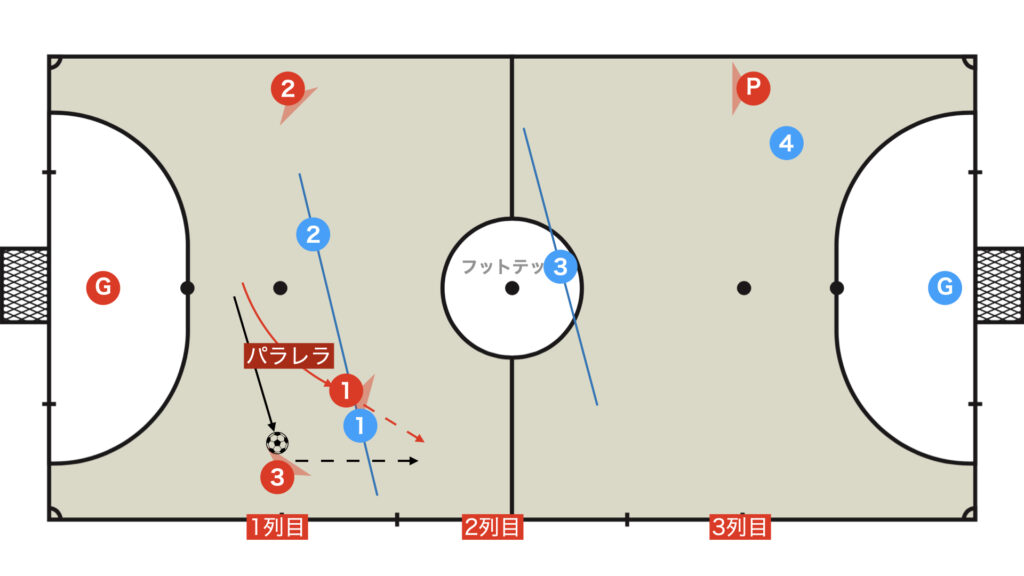

As shown in the above figure, this is a Parallera that crosses one DF line—for example, a pass from the first line to the second line.
Mini Parallera
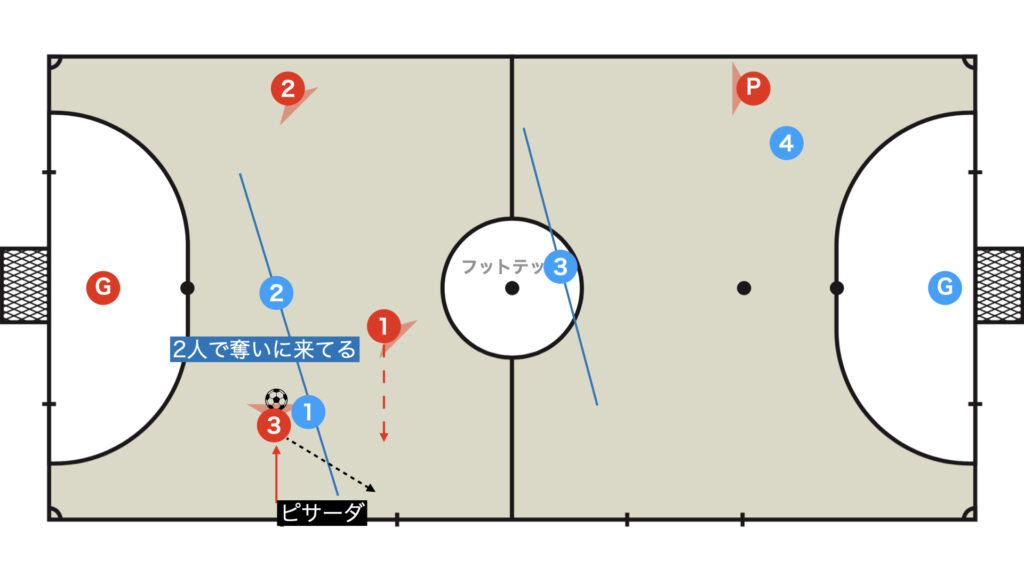

When facing a defender who attempts to intercept by sandwiching between the 1st DF and 2nd DF, slightly bringing the ball inside tends to open up space behind them.
This very short version of a short Parallera, which utilizes moves such as pisada, is referred to as a Mini Parallera.
(Mini Parallera is a type of short Parallera.)
Long Parallera (Long Variant)
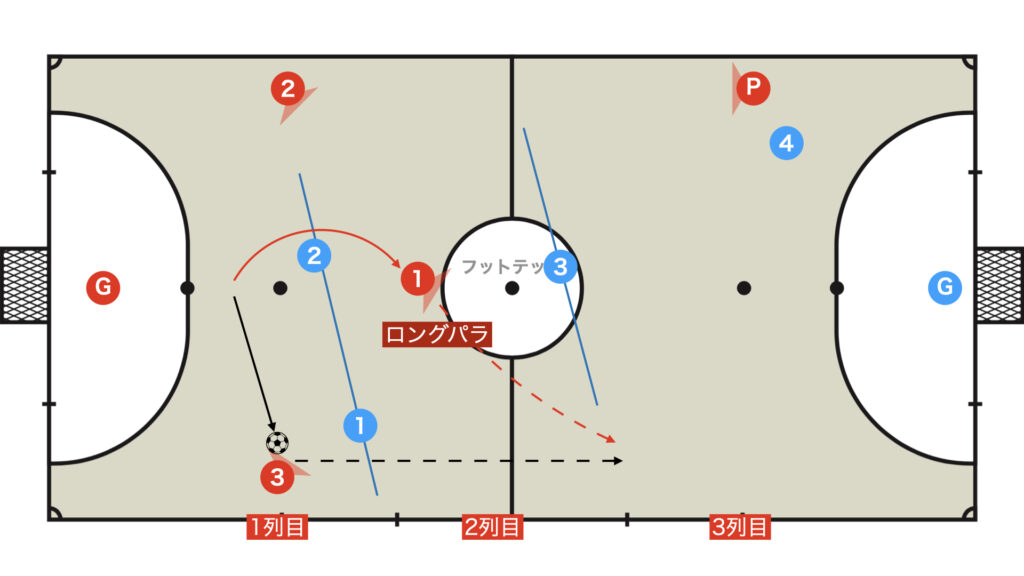

A Parallera that crosses two or more DF lines is called a Long Parallera.
The above figure shows fixo (red No.1), who was in the first line, maneuvering around blue No.2 to become momentarily free between the lines and bursting into the third line.
Types of Receiver Movements
They can be broadly classified into the following four types:
- Direct
- Change of Direction
- Pace Variation
- Arcing
Direct (Linear)
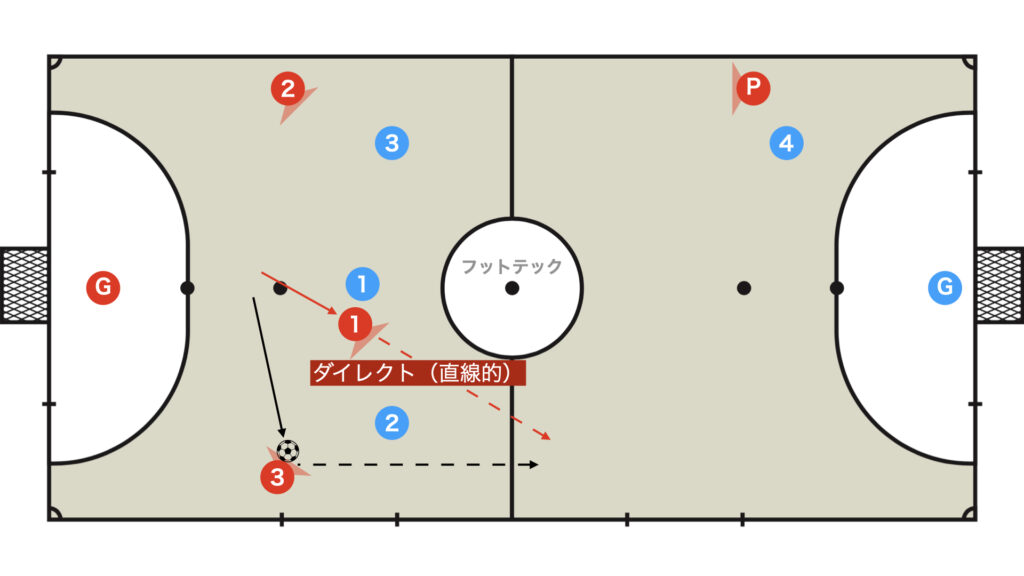

A direct, linear Parallera that is effective for fast players.
There is a risk that the receiver may enter the space in front of the ball before the pass is played, so the passer must deliver the pass promptly.
Arcing (Parallel Support → Parallera)
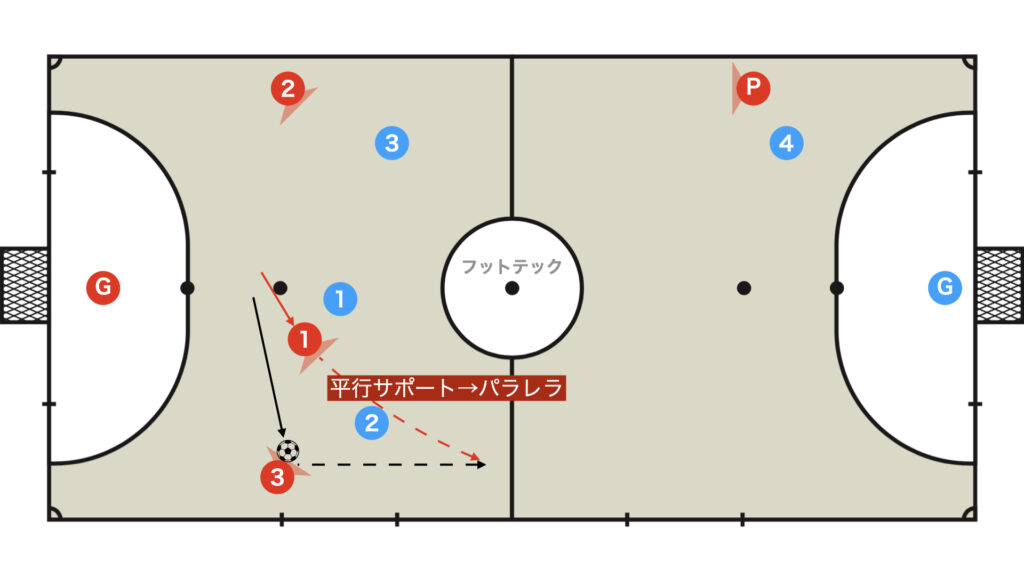

By moving closer to the ball holder and cancelling horizontal support (one-two, block, curtain), a Parallera is executed.
If the passer attempts a one-two at the moment fixo (red No.1) is trying to break through with a Parallera, it could lead to a big problem.
Pace Variation
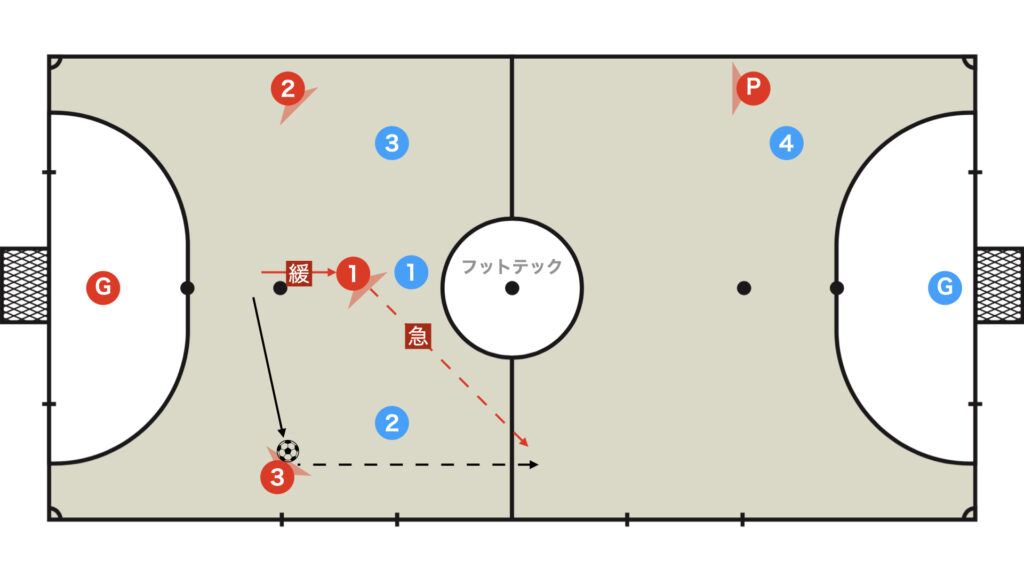

This is a play that Kensuke Nakai excels at.
He initially appears as if he has no intention of receiving a pass, then suddenly accelerates.
Quebrar (Change of Direction)
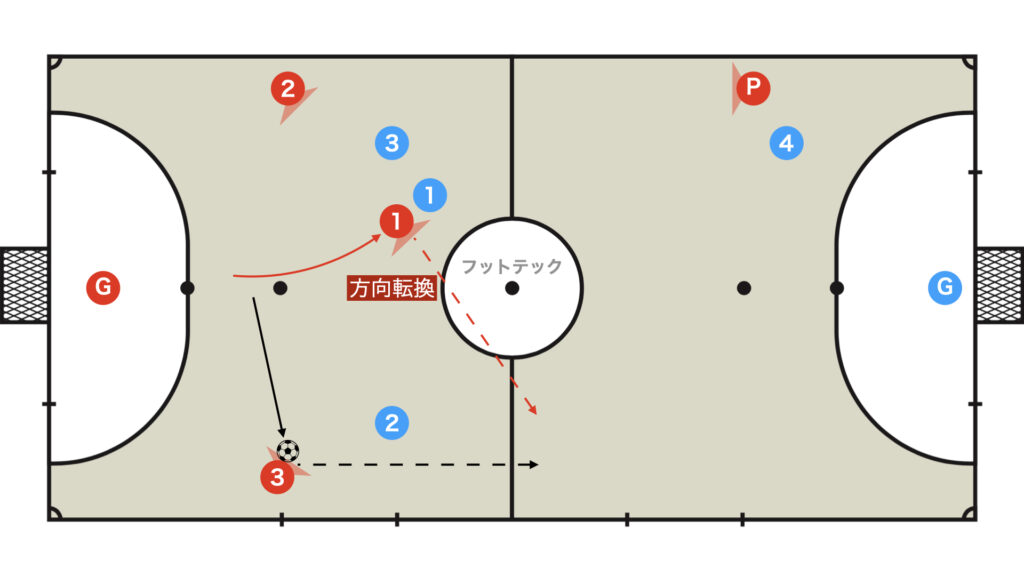

Diagonal feint is used to change direction and then break through with a Parallera.
Since the outcome is nearly decided by the feint before the change of direction, this Parallera is recommended for players who lack speed.
In futsal, this kind of deceptive movement is called Quebrar.
Thank you very much for reading this article to the end.
If you found this article useful, please consider sharing it using the social media share buttons above.
We regularly share valuable insights on futsal tactics on Twitter, so if you haven’t followed us yet, we’d appreciate your support!
We are committed to raising the level of futsal in Japan by sharing high-quality information through discussions with individuals who have coaching experience in the F.League and overseas.
If you have any questions or notice any mistakes, feel free to leave a comment below.
We update our articles regularly, so if you’d like to keep reading, please bookmark our site or search for “FutTech”!
